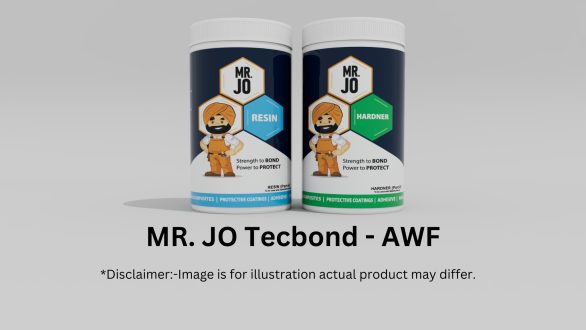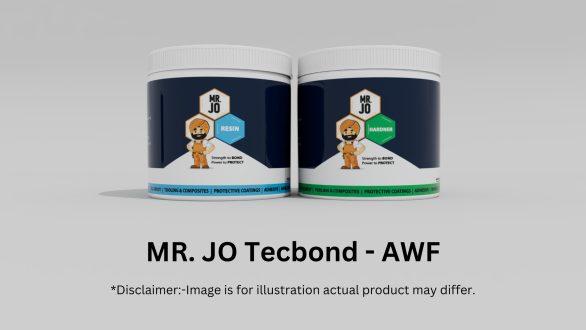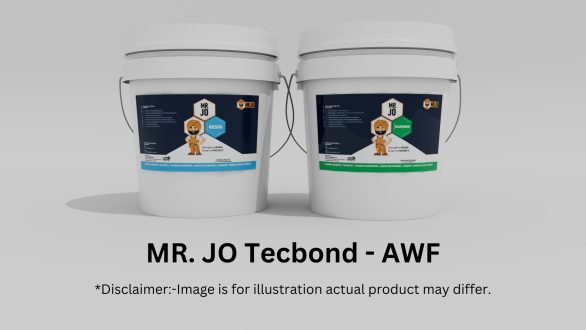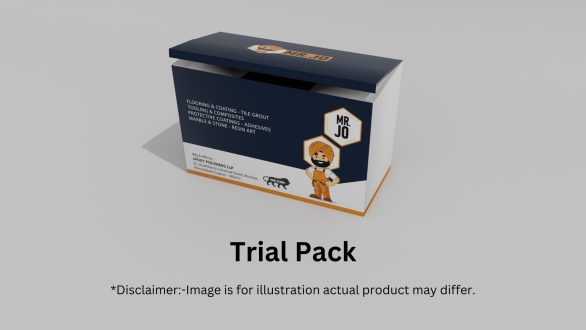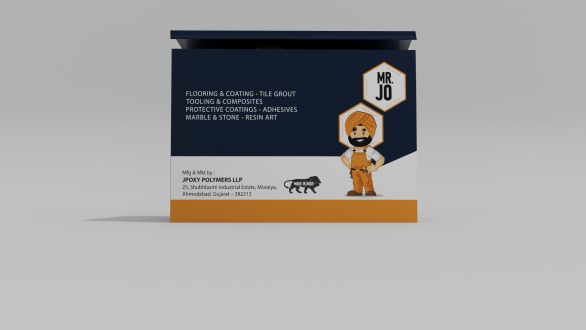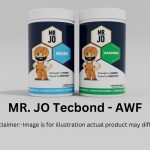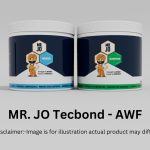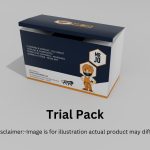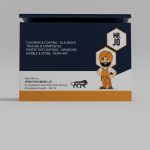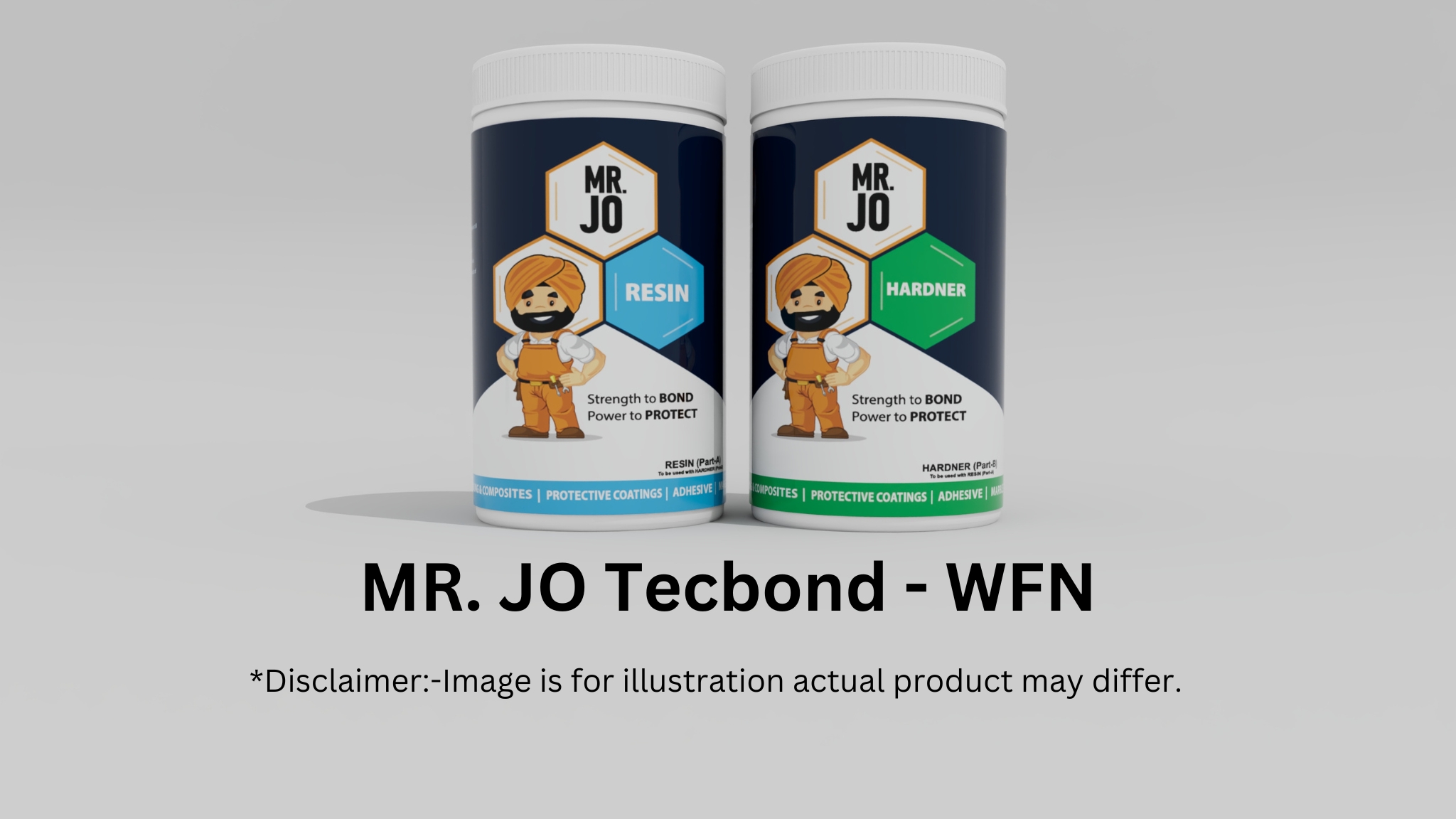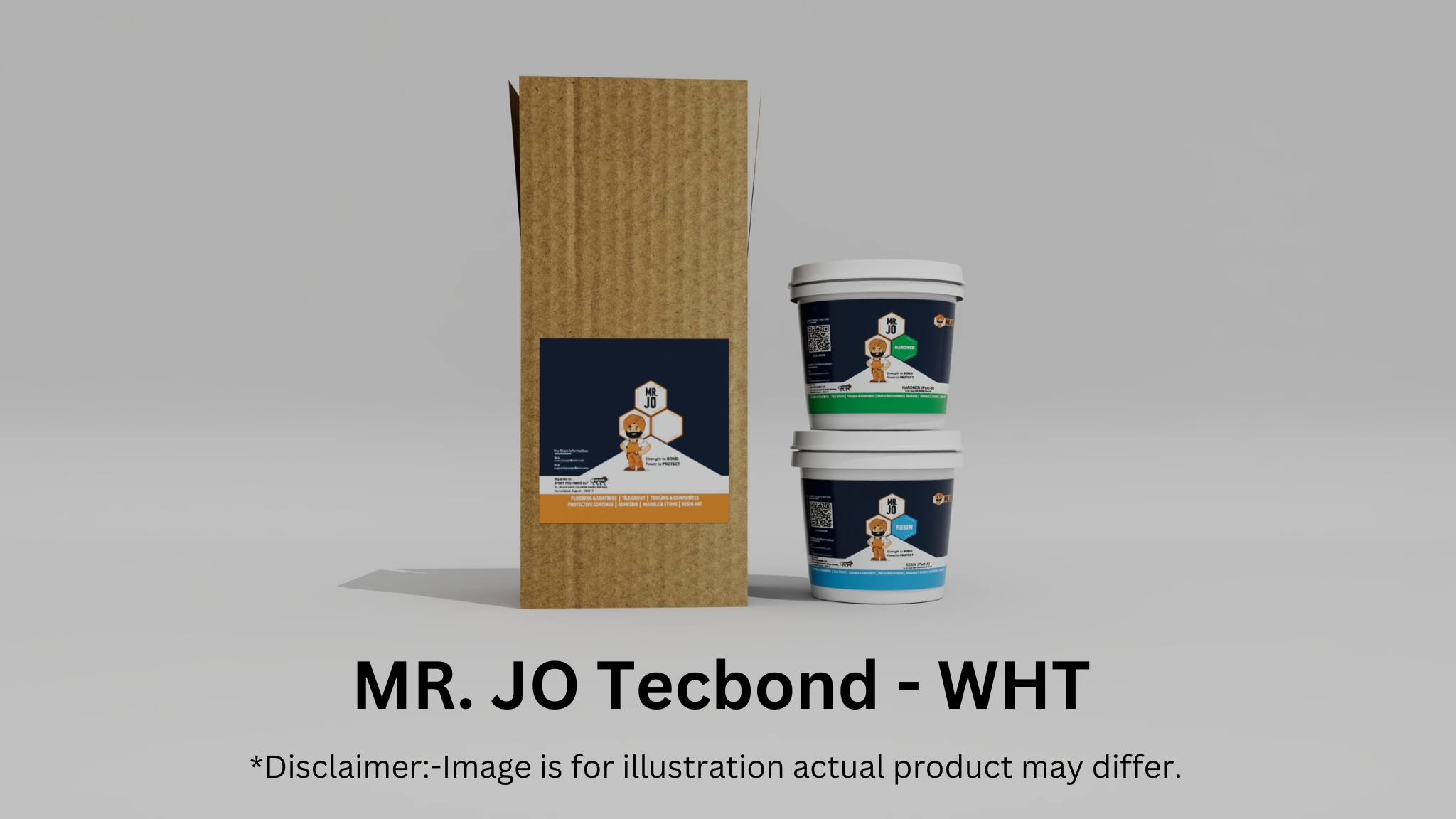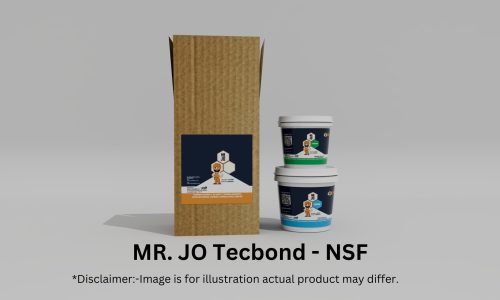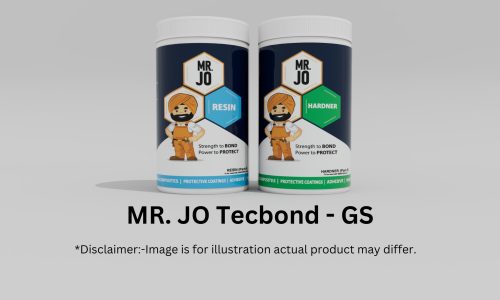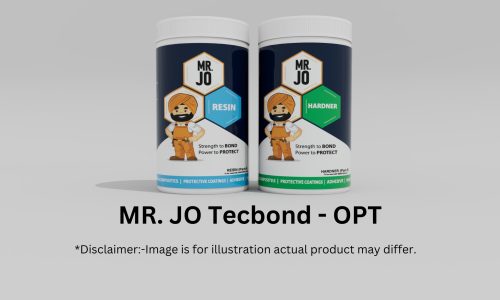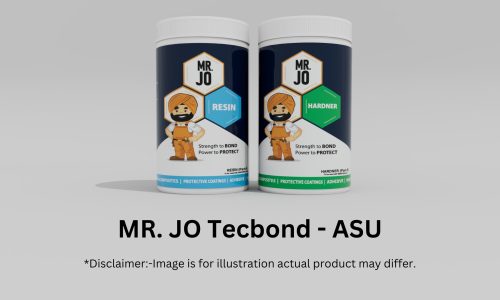MR. JO Tecbond AWF
₹128.00 – ₹7,448.00 Inclusive of all taxes
Two components 80 PHR epoxy adhesive for beige wood
- Description
- Properties
- Applications
- How To Use
- Technical Data Sheet(TDS)
- FAQs
Description
Mr. JO Tecbond AWF is a high-quality, solvent-free, two-components epoxy adhesive. It is great for wood furniture and fixtures. It has strong and durable bonds. This beige wood glue gives excellent adhesion. Additionally, it offers long-lasting stability. The 100:80 PBW mixing ratio makes it easy to use. It’s perfect for various woodworking projects. Also, it blends well with wood surfaces. Whether you’re a professional or a DIY enthusiast, it will improve your projects with reliable, high-strength bonding.
- Color :- Beige
- Pot life :- @25'C: 70:90 mins
- Mixing Ration :- 100:80 PBW
- Mixture consistency :- Think flowable liquid
- Optics :- Opaque
- Sealings screw holes
- Windows and doorframes
- Furniture
- Woodend artifacts
- The mixture should be applied on a clean, rough and dry surface. For good results, it is required that the concrete surface is clean, rough and dry. This should be achieved by suitable mechanical and chemical means such as sandblasting. Wire brushing or chemical etching. Suitable degreasing agent should be used to remove any grease, oil or traces on the surface.
- Use Part A & Part B in ratio 100:80 PBW. Mix the two components in small batches thoroughly for at least 2 minutes.
- Apply the mix on the prepared substrate directly or using proper spatula.
- Sufficient quantity of adhesive is to be applied so that bonding layer between the substrate is sufficient thick.
- Allow at least 8 hours for good bond strength.
A1. These are wood-specific epoxy adhesives designed for:
- Filling knots, cracks, or defects in natural wood
- Invisible bonding in furniture joints
- Crafting or restoration of visible wooden surfaces
They’re formulated to blend with wood tones and are especially suited for exposed joints and high-finish applications.
Q2. What’s the difference between MR. JO Tecbond-WF, WFN, and AWF?A2. All three perform similarly in strength and application, but differ in shade:
- WF – Medium brown (for walnut, teak, or mid-toned wood)
- WFN – Light brown/natural tone (for lighter wood like oak, pine)
- AWF – Dark brown (for rosewood, sheesham, dark finishes)
This ensures the adhesive blends with the wood and remains nearly invisible once cured.
Q3. Who uses these adhesives most?A3. They're widely used by:
- Furniture manufacturers
- Wood craftsmen
- Restoration professionals
- DIYers & carpenters
- Especially where aesthetics, clean joint lines, and cost-efficiency are important.
A4. Yes. They offer similar performance to MR. JO Tecbond – OPK but are specifically tinted and optimized for woodwork, making them a smart, economical choice for volume use in wood bonding and repair.
Q5. Can they be used to fill gaps, knots, or holes in wood?A5. Absolutely. These adhesives are semi-paste consistency, making them ideal for gap filling, knot hole repairs, and sealing eyes in wooden surfaces.
Q6. Can these wood epoxy adhesives replace traditional wood glues?A6. Yes. They are much stronger and more durable than standard white or PVAc glues, especially where gap filling, moisture resistance, or long-term strength is required.
Q7. Are these adhesives visible after finishing (varnish, polish, or PU coating)?A7. No. When matched to the wood shade and properly sanded, they blend seamlessly under varnish, oil, polish, or PU coatings, making joints and repairs virtually invisible.
Q8. What is the pot life and mixing ratio?A8. Mix at 100 parts resin to 80 parts hardener by weight (100:80 PBW). Pot life is typically 50–70 minutes at room temperature.
Q9. Can they be sanded, stained, or polished after curing?A9. Yes. Once cured, the adhesive can be
- Sanded flush
- Stained or oiled
- Polished or coated with PU/lacquer This makes it easy to blend into the wood finish.
A10. Light to moderate clamping or pressure ensures proper bonding. For filling or cosmetic repairs, simply press or level the material using a spatula or scraper.
Q11. How thick can I apply the adhesive while filling a crack or defect?A11. These adhesives can fill gaps up to 3–5 mm thick in a single application. For deeper fills, apply in two layers, allowing partial set before topping up.
Q12. Will the adhesive bond oily or resinous woods like teak or sheesham?A12. Yes, but for oily woods, we recommend cleaning the surface with acetone or alcohol first to remove natural oils, which can interfere with adhesion.
Q13. What is the finish after curing?A13. A matte to satin finish, closely matching the wood tone. The joint line is designed to visually disappear once sanded and finished.
Q14. Are these adhesives strong enough for structural wood joints?A14. Yes. These epoxies provide excellent mechanical strength, suitable for tenon joints, dowels, or bonded panels, in addition to cosmetic repairs.
Q15. Can I request a custom wood shade for bulk orders?A15. Yes. For large-volume requirements, we can match wood shades on request, subject to minimum order quantity (MOQ).
Q16. How do I clean tools after using the adhesive?A16. Clean tools with isopropyl alcohol or acetone before the adhesive sets. Once cured, it can only be removed mechanically.
Q17. What should I do if the cured adhesive is slightly raised above the surface?A17. After curing, simply sand the surface flush with the surrounding wood using 180–220 grit sandpaper before final finishing.
Q18. Is this adhesive flexible or brittle after curing?A18. It cures to a firm but slightly flexible bond, suitable for seasonal wood movement, minor expansion/contraction, and mechanical stress in furniture.

